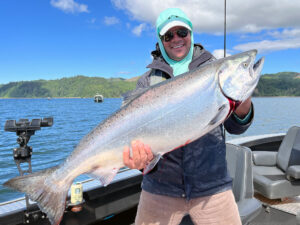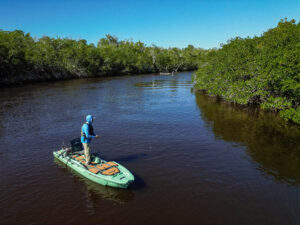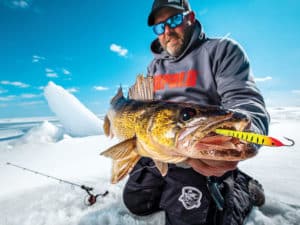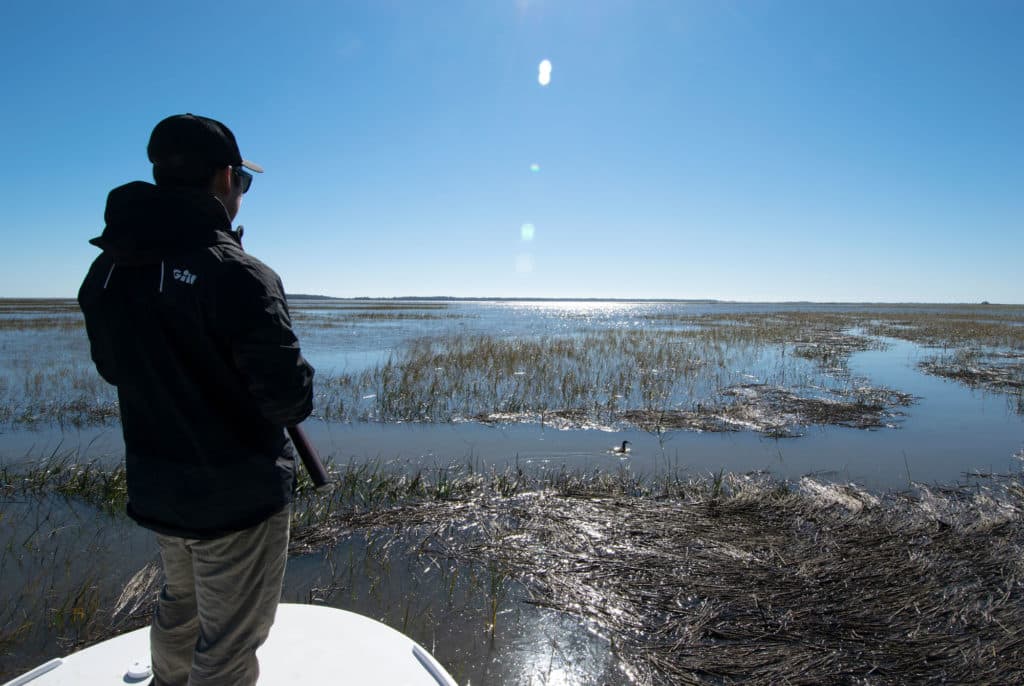
The November flood tide swamped the pluff mud and oyster reefs, rising well into the cordgrass. Capt. Greg Hildreth poled his 17-foot Mitzi Skiff to an open area in the south Georgia marsh, hunting redfish. Chris Hong, account manager for Gill Fishing, stood at the Mitzi’s bow, balancing a light Penn spinning rod between his fingertips. Hildreth had rigged him up a Gulp! Shrimp to fish weedless.
Redfish slide into the marsh grass on certain tides, usually three or four days a month — when the water rises high enough to provide a safe feeding depth. They nose down to nibble fiddler crabs and shrimp in the muck, tails fanning the air, fixated on forage. “They’re in there to do one thing, and that’s eat,” Hildreth says. “It’s kind of like getting to go to a restaurant that you don’t go to but once a month. You make the most of it.”
Of course, sightcasting to tailing reds delivers the same kind of sensory spike as spying bonefish over a tidal flat. Combine that thrill with the idea of wingshooting clapper rails — also known as marsh hens — and you’ve conjured a uniquely southern cast-and-blast adventure.
Georgia’s Redfish and Marsh Hens
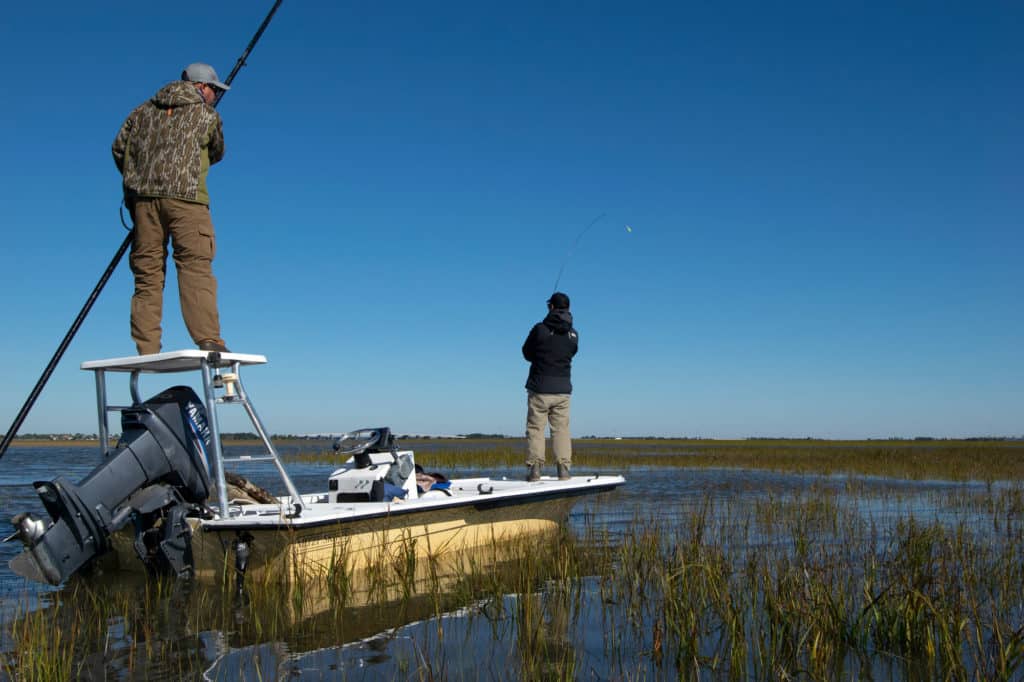
Hong and I had met up with Hildreth at a Brunswick, Georgia, boat ramp that fall day, hoping to sample the best of both worlds. But a severe cold front had shuddered through the region three days prior to our trip. The dropping temperatures chilled the water and stalled the redfish bite. But even if the reds had moved to deeper water, Hildreth predicted that the blast half of our excursion would more than mend our disappointment. “It’s gonna be killer,” Hildreth announced happily.
The peak period for targeting reds and hens on the same day occurs in October. Anglers can target Georgia redfish year-round, but during early fall, good numbers of fish actively feed in shallow water. A 7.8- or 7.9-foot tide brings the fish onto the marsh, but that’s not enough water to easily pole a skiff after birds.
On an 8.1-foot or greater tide, a skiff can almost drift through the Spartina tips, and birds cluster atop floating mats of grass. Georgia’s marsh hen season runs Oct. 5 to 24, and opens again Nov. 1 to Dec. 20. (State and federal waterfowl regulations and license fees apply.)
A typical south Georgia marsh cast-and-blast starts with some sightfishing for red drum followed by a marsh hen hunt. Credit: Chris Woodward and Chris Hong
Fishing Flood Tides
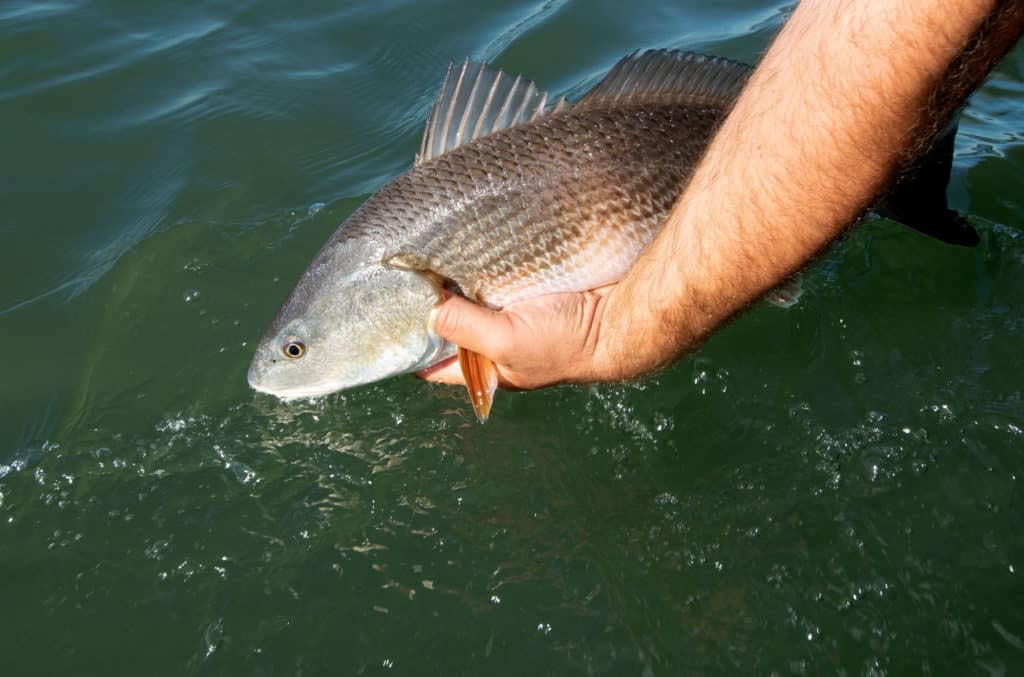
At the beginning of the incoming tide, Hildreth scouts fish — most of which tape out in the 24- to 30-inch range. For anglers who prefer to use conventional tackle, he spools a 2500- to 3000-size spinning reel with 15- to 20-pound braid mainline and 15 inches of 20-pound fluorocarbon leader.
He ties on a Gulp! Shrimp, rigging it weedless, burying a wide-gap worm hook back into the bait. No weight, no cork. Fly anglers typically gear up with an 8-weight rod, a weight-forward floating line and a tapered redfish or bonefish leader. They tie on a wooly bugger with a weed guard or some kind of shrimp pattern. “It’s important to be patient and wait for a shot,” he says. “When the line falls across grass, they can feel it.”
Rods Down, Shotguns Up
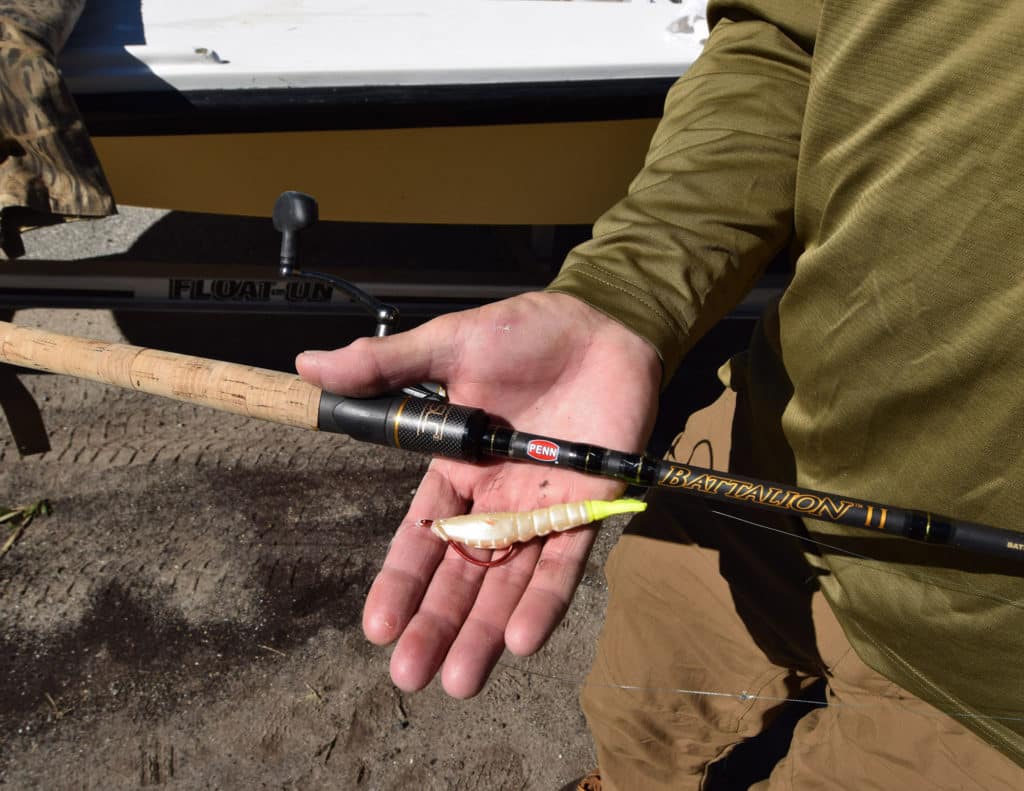
The distracted, feeding fish often let Hildreth pole to within about 40 feet. “I’ll watch the fish. If he’ll move into an open pocket of water, we can get the fly out in front of him, let it sink, and slowly strip it in front of his face.”
The stalk-and-cast action can last an hour or two and offer anything from two or three shots to 15 or so before it’s time to pull out the shotguns. Of course, that can be a hard-sell if the bite blows up. “You’ve got to be committed, if you want to do both,” Hildreth says. “You’ve got to put the rod down and pick up the gun. Some guys just say ‘Let’s fish.’”
As the tide rises, mice and minks scurry over floating mats of dead grass, or wrack, to find a dry spot. Marsh hens settle frightfully among the few remaining grass tufts. In fact, the rising water eliminates every trace of channel and every useful landmark. What was once a grassy maze full of twisting waterways resembles a wide-open lake.
Hunting Clapper Rails
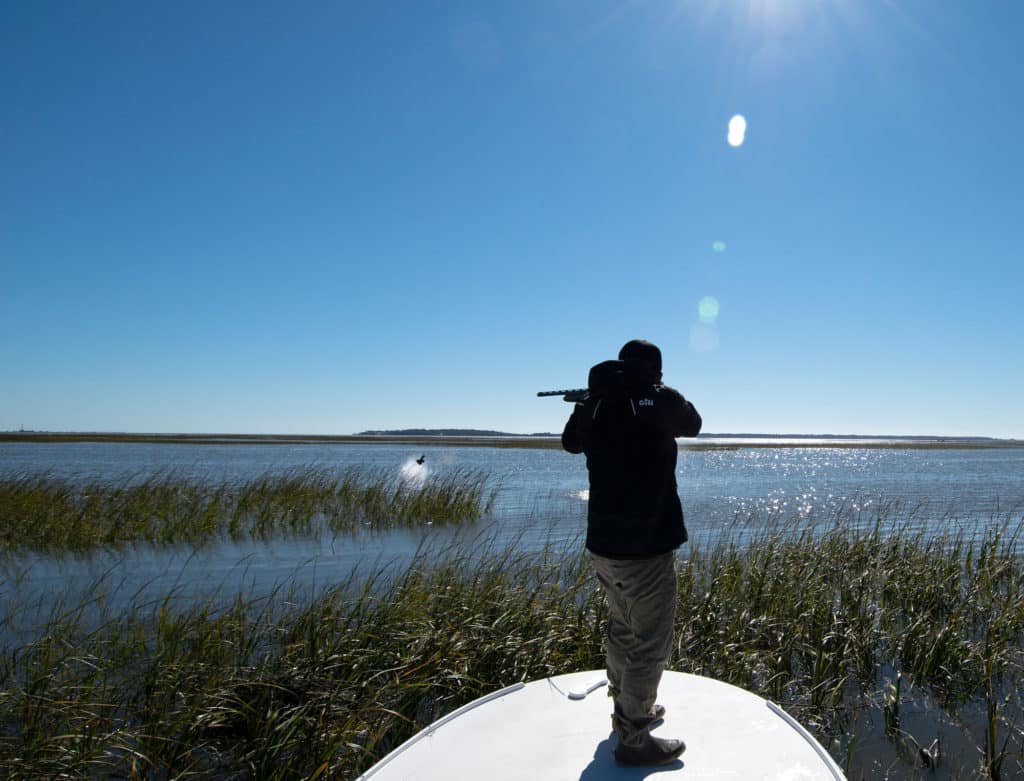
Hong hauled out a Benelli 20-gauge shotgun and filled his pockets with No. 8 shells (steel shot is not required), and Hildreth positioned the skiff for a long southerly drift. Hunters need no camo clothing for this sport because hiding from rails on a boat seems fruitless. Hong wore a black Gill jacket and I wore a maroon Gill hoodie and khaki fishing pants.
Clapper rails, as well as Virginia, Sora, and king rails, are considered migratory waterfowl, although many appear to reside year-round in Georgia marshes. They thrive along much of the U.S. East Coast down into the Caribbean and Central America, according to the U.S. Fish and Wildlife Service. The birds’ plumage appears brown and gray, and its legs and slightly downturned beaks are long and slender.
Clappers apparently feature a salt gland that enables them to drink sea water, the USFWS says. The birds emit very telltale cackling sounds; they also prefer to walk and swim rather than fly.
Easy Success Bird Hunting
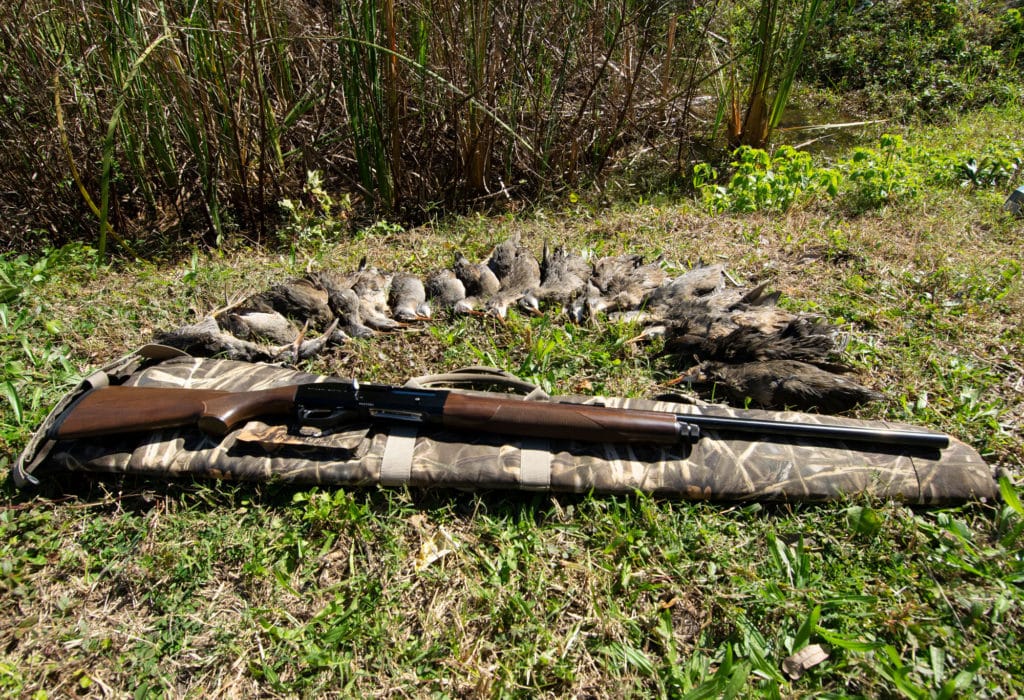
As Hildreth kept the bow pointing forward, Hong called out the numerous birds he spotted. By poling, captains eliminate the noise and tangling issues caused when the cordgrass wraps the outboard or trolling motor prop.
As the boat approached a cluster of birds, they began to walk and jump along the marsh wrack and swim in different directions. If spooked enough, most flew — slowly. “Put it right on their nose,” Hildreth directed, after Hong led the first slow flyer. “C’mon chicken,” Hildreth urged as a number of birds simply swam out of range.
Despite the marsh hens’ reluctance, many birds flew, often just 10 to 20 yards out — creating easy targets. For clappers and kings, Georgia limits hunters to a 15-bird daily bag.
Read Next: More Cast and Blast Outings
When I took my turn at the bow, I was thoughtful about balance. Standing on the bow of a boat to shoot felt a little unsteady, so I took a wide fore-and-aft stance. I doubled on my first attempt because both birds flew almost directly in front of me. “Nice! Nice!” yelled Hildreth.
As the boat continued to move, other birds swam well to our port and starboard before launching. Picking which bird to follow and positioning to shoot meant an occasional miss, despite the relatively slow targets. We picked up all the shot birds as we drifted, or motored back to them when necessary. Although rails can be quite gamey tasting, properly preparing the breast meat delivers delicious poppers or gumbo.
At the end of the hour-plus drift, we had collected more than 20 birds — just a few shy of our limits. We had missed the fishy half of this cast-and-blast, but the bird half thrilled, reminding me of the abundance and success of an Argentina dove shoot. In fact, Hildreth says he likes to use a .410 shotgun to increase the sport. I might just try that next time.
Prepare Marsh Hen Poppers
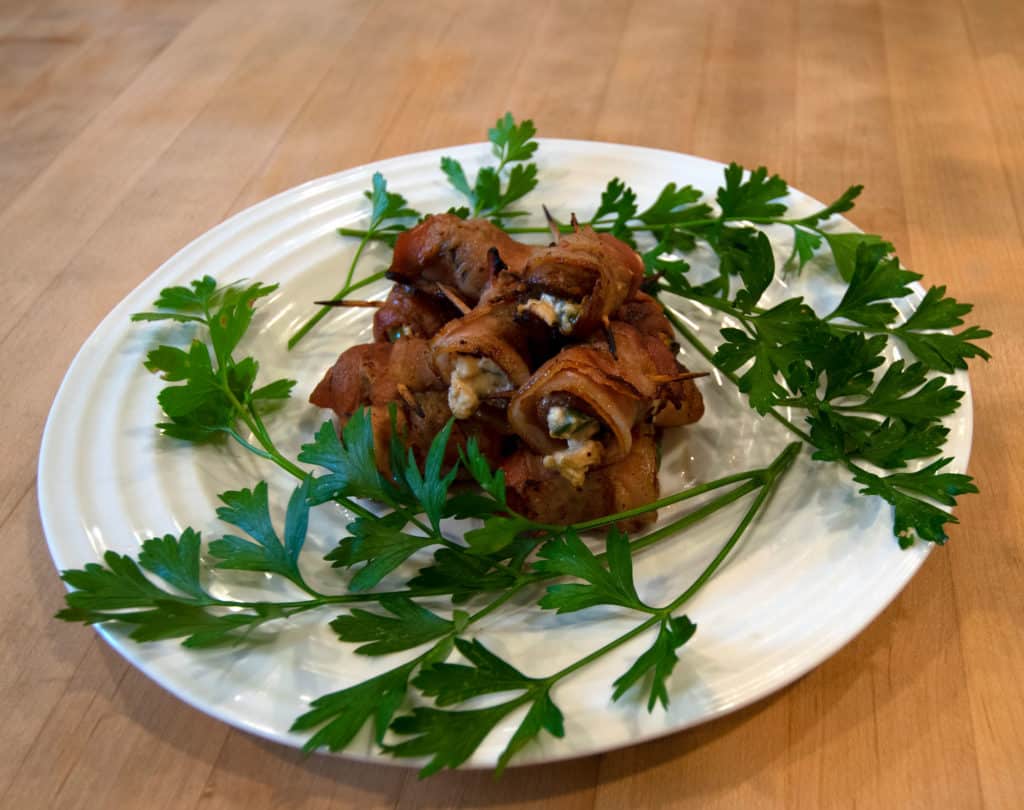
- Carve the breast meat from the birds.
- Soak the meat in brine overnight, in the refrigerator, and then remove and pat them dry.
- Mix a marinade of balsamic vinaigrette and a splash of Dale’s steak seasoning in a plastic bag or small container; submerge the meat in the liquid and refrigerate for at least several hours, if not overnight.
- Remove the breasts from the liquid and lightly pound them until they flatten a bit.
- Cut a fresh jalapeno pepper in half, remove the seeds and cut small slices of pepper.
- Cut bacon pieces in half and lay out some toothpicks.
- Take a small amount of soft cream cheese, embed a piece of pepper, and then roll it all up in the breast meat.
- While you hold the meat closed with one hand, use your other hand to wrap a half-piece of bacon around the popper, overlap the bacon and pin it with a toothpick.
- Lay the poppers around the edges of the grill and flip as necessary until the bacon and meat brown.
- Eat poppers as is, or make your favorite sauce for dipping.

